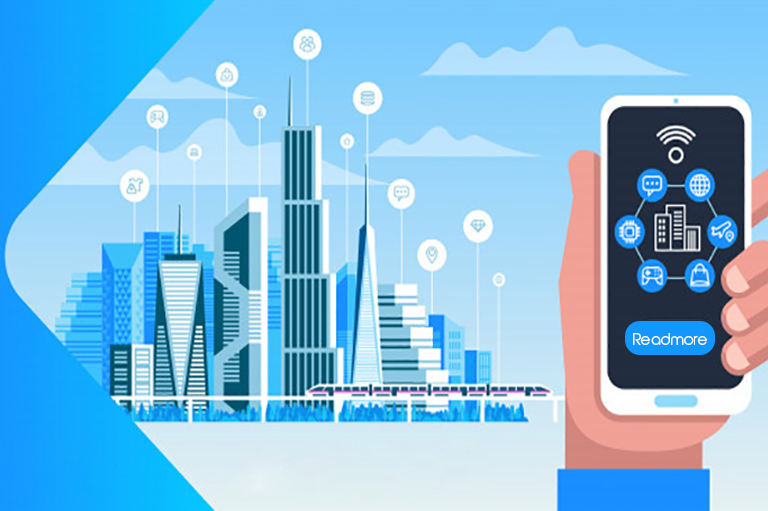Narender Yadav / October 11, 2019

Every new technology introduced to the mainstream brings along new possibilities that stir change into the existing system to redefine and reinvent new trends.
And when it is about a disruptive technology like IoT, which is built and raised on most advanced concepts, designed to serve the most innovative possibilities, it has to be a gamechanger.
What’s on charts?
As per PWC “IoT is transforming the everyday physical objects that surround us into an ecosystem of information that will enrich our lives.”
And as stated in a Goldman Sachs report “The global industrial sector is poised to undergo a fundamental structural change akin to the industrial revolution as we usher in the IoT.”
So, what world gets to see is pure technological bliss, with never-before internet-grouped device utility – offering next level accessibility and control with everyday tasks at home and work!
IoT – as it goes!
IoT is about connecting people with devices over hyper-digital communication networks powered by the Internet. Where digital programs work with industry equipment, domestic gadgets and user wearables to serve dynamic ideas of connected mobility like home automation, connected cars, and smart retail. Like you remotely turn off your AC back home using an app while rushing towards your office, is a very basic application of IoT.
The course of evolution
It tags back to early IT applications that steadily moved onto serve user communication needs to become the mighty Internet of Things. It began with basic hardware electronics that replaced traditional utilities, moving on to software resources with higher processing intelligence, and then sweeping in the great network of networks – internet, and now it is about connecting the internet with those software powered devices to create the ultra-advanced phenomenon of IoT.
The entailing shift
The Internet of Things is a new world concept designed to serve the most advanced ideas of connected mobility. It is a leap of a change in the information technology arena and here are some of the most noticeable trends it has brought in to redefine the development landscape.
Advanced coding practices
IoT has brought in the need for advanced communication technology to be served with complex codes. It is not just about a program interacting with the user, but the user who is interactively handing a tangible gear or a machine seeking communication within a connected environment. To be able to do this effectively, programmers are required to gain an understanding of advanced coding practices and applications that are intrinsic to IoT development.
Building IoT applications requires an in-depth understanding of the latest approaches and practices (for designing connected mobile apps and facilitating gadget communication) that are innate to IoT development. But, keeping up with the applied science that is still growing to take fuller and fluid status is a challenge. This requires developers to put up with highly flexible development techniques that are all based on hybrid practices to deal with the new and volatile IoT.
Hyper-connected devices operating in sync with dynamic controller network and processing real-time interactive data need to be dealt with extra care. To keep it functioning and delivering well it needs to be supported with proficient QA practices. And has to be checked for compatibility, performance, and accuracy at every point, with precise QA programs and policies in place. Or otherwise, it could end up in futile operations and unfavorable results.
With IoT going big and vast to work in conjunction with different technologies utilizing various data networks and web resources, the conventional security measures are increasingly turning outdated. The data security challenges are aggravating with time and confidentiality and integrity are the two things that are being compromised the most. Developers are required to be in control of more sophisticated and assuring data security practices and implement them with a great level of compliance and authority.
The more complicated and multi-faceted the process of development is, the more time it takes to build and deliver the product. IoT is not as much applied and practiced by engineers yet and is a fast-evolving technology that mostly needs various experimental tests and knowledge acquisition to be done before being applied to build a solution. This requires IoT development teams to invest more time in research and planning to build a solution and thus it has a higher turn-around-time for development and deployment.
IoT applications are more about user experience. Most of its part is about how seamlessly the user can interact with the connected gadgets to produce utility within the operative environment. It has made developers in an Internet of Things development company work towards real-time crowdtesting, advanced UAT, and environmental probing practices to allow them to make the most of bug fixing, feature additions and UI overhauling practices to make it best address the usability factors. So that they can build IoT solutions that work flawlessly with real users!
When we talk about IoT devices the first things that strike are the batteries and power operators that make them work. This requires providing these with apt power management resources to make them utilize power to function optimally. The core of it rests with the product design which should be planned to minimize the drainage and maximize the preservation of energy resources. The team of developers and designers working on IoT applications is therefore expected to plan and create apt functional designs that are built to serve battery-supported devices optimally and this has a great bearing on the approach and practice of designing that is followed in IoT development.
Final Words
These are essentially the most prominent reasons to enumerate on how IoT is redefining and remodeling the development trends. And this is going to far impact the way things are being referred and practiced in the mobile and web development landscape – taking the entire course of development and allied practices through a significant transformation.
If you would like to know more about the topic or hire IoT developer from a leading software development company USA, contact us at info@darkbears.com.





Comments are closed.
Great content! Super high-quality! Keep it up! 🙂